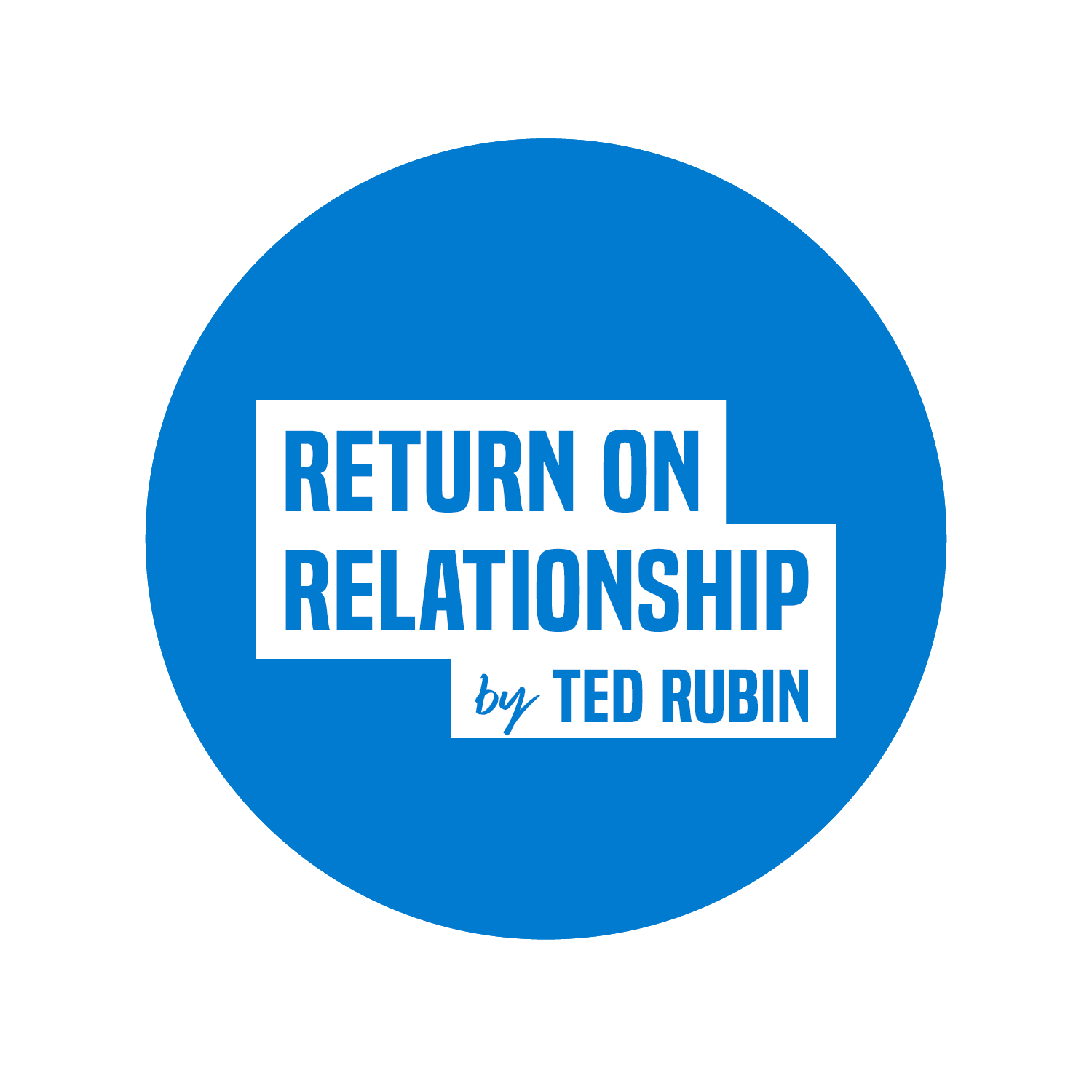A Metaverse Manifesto, Part 2: Interoperability ~via @KatieRichman
Katie's Metaverse/metaverse Part 2... after reading this I am hoping for a Part 3, or at the very least to continue this conversation regularly with Katie as the space evolves. /Ted
The big, universal metaverse we‘re picturing won’t happen without a singular user identity system. Today, this system doesn’t exist..but blockchain makes it possible.
Disclaimer: These are MY ideas and I speak only for myself. Opinions and beliefs only, so take that as you will.
Start with the first part of my metaverse diatribe: A Metaverse Manifesto, Part 1: We’re already in the metaverse.
A couple of years ago, I (like almost everyone) was caught up in an identity hack. Either my bank or som store loyalty program had lost control of my user/pass to a hacker. This might have been no big deal (should have been no big deal)…except…yeah…I had done the thing you’re not supposed to do — I had used the same user/pass across dozens of products and platforms.
Hackers, creeping on my data.
As I angrily spent my Sunday resetting accounts, I was kicking myself — I work in tech and know better. Why did I do this, when I knew it was insecure? Oh yeah…because I have TOO MANY DAMN USERNAMES AND PASSWORDS.
In Part 2 of my “Metaverse Manifesto,” I want to talk about why this system is not sustainable. Beyond being annoying and unsafe, the Web 2.0 app-based model is a huge roadblock for any kind of cohesive metaverse to coalesce.
Interoperability.
As I’ve said before, I believe the WORDS of Web 3.0 are getting in the way, so let’s agree on what we mean by the ‘interoperability’ of digital experiences:
An interoperable metaverse would look like ONE universal user experience, where all of our apps, products and platform experiences connect and agree on who I am universally.
Fragmented digital ‘selves’ of 2.0 versus a single self in 3.0 (enabling the metaverse).
Web 3.0 and the metaverse rely on our products ‘talking’ to each other, agreeing on who I am. This interoperability is what allows for the single metaverse we collectively picture. If our products can work together under the hood, we can create ONE seamless system for users, allowing users to forget there’s a system in place at all. Our digital experiences can fit elegantly and invisibly in the background. This ONE interoperable digital system/graph is the realization of Web 3.0. Product interoperability enables us to LOOK UP from our devices (see Metaverse Manifesto Part 1).
The tl;dr:
Web 2.0 is NOT interoperable.
A metaverse without interoperability…is not a metaverse.
Why is Web 2.0 fragmented? Because of user identity.
IDENTITY is the primary roadblock preventing interoperability in Web 2.0. In 2022, WE have to toggle in and out of individual apps and websites — and each has a unique user account, profile, and password. It feels like a bucket of keys that each only fit one lock.
Managing our identity across the internet today requires an enormous keyring.
Overall, there is no technical reason for this fragmentation. Products today operate as ‘walled gardens’ because of how products make money. Each product packages up our data in order to control user experiences and make money. Oftentimes, the data is being collected, stored, and used in unclear and misleading ways, with details laid out as legal jargon, buried deeply in the Terms of Service.
I always tell kids: If you look around and can’t find what the app is selling…then they are selling you. This 2.0 model worked in early days, and has wreaked havoc on TRUST in digital products and platforms. Most of us are left today feeling angry and not in the driver’s seat. We feel that we don’t have control. That’s scary.
Why haven’t we fixed this yet? We’ve tried…
The OpenID protocol was created in 2005 and still exists.
OpenID has been the closest we’ve come to adoption of ONE seamless system of identity — it is an open and decentralized identity system, launched around 2005 by open web advocates. Adoption peaked around 2014 but ultimately has stalled out as a stalemate: Who is the canonical owner of the user account? Who is storing the main data? Given the way Web 2.0 and mobile monetize user data, no product was willing to give up the control to another application or company.
Then we have 3rd-party login providers, who have tried to come in and make login easier for users. Instead, providers like Okra found themselves hacked, exposing all of their customers’ data.
Cut to 2022, where users are attempting to juggle and securely manage HUNDREDS of unique accounts — each with their own user ID and password.
I hope you remember your 16-digit password for each of these, at all times.
What does this look like? It’s 10am and already today my computer has authenticated me using my Facebook (FBID), my Google ID (where I could login with Twitter), my Google ID (offering me ‘login with Apple ID’), my Apple ID (which would like me to use to login to my bank), my Spotify ID (which is tied to my FBID).
Today, I will navigate the internet all day via my iPhone (the ultimate siloed Web 2.0 ecosystem) actively launching apps one at a time, toggling between them. Each requires a unique user name and password. It’s like needing a HUGE ring of unique keys that each fit in one lock.
No one is happy with this system. I am not happy with this ‘system’ at all. Are you?
She’s clearly not happy with this system.
But what if there was a way to use a SINGLE identity everywhere? Hmmm…
A PASSPORT for the METAVERSE
Let’s take this metaphor too far, shall we?
Yes, I know Passport for the Metaverse is a bit much, but stay with me. Blockchain (or another decentralized platform for identity) gives us an un-owned way to build ONE agreed-upon identity system…which in turn allows us to develop ONE UNIVERSAL METAVERSE.
Every human on earth can opt in to have a single identity NFT minted. This unique NFT represents my identity for the rest of time. Someday, parents will come home from the hospital with their baby, a state-issued ID, and their baby’s Universal Identity NFT. We can look back 10 generations, to find our ancestor’s UI NFTs, along with the data they chose to leave as their legacy.
What makes this Universal Identity Blockchain different?
How is this different than other blockchain protocols? Why do we need a NEW protocol?
This new blockchain would be an open web initiative. No one company, government, organization, or individual will own the blockchain. While open-web advocates are hacking on blockchain identity all the time (ERC725 for example), I believe we need to start fresh together with a new blockchain, built collectively and transparently, from the ground up, together.
Identity nodes only. The blockchain would not store all of your data — it only stores the NFT nodes, to be accessed by products and platforms. So then where’s all of my user data?
Nothing is on this blockchain except the identity nodes. Products and platforms simply associate their existing system with the node. Like other platform updates and changes, this would be initially approved/allowed by the user (Yes, LinkedIn can associate my NFT ID with my LinkedIn account number). After that, everything is largely invisible to the user.
Data associated with the NFT are not on the blockchain. Our shared universal identification blockchain will merely store the NFT nodes in a decentralized way, via an external server solution like IPFS. So everyone shares the UI NFT system, but none of us OWN it. Or…we all own it collectively.
Beyond tech. Eventually, this identity blockchain can expand outside of tech, adopted by governments, healthcare, education. The NFT ID becomes your global identifier.
Equal access to all: Like all blockchain, everyone — including the user — will have 100% transparency into their user NFT. The user will store the keys and passphrase, as we each own our NFT (like a long string address) completely. This id will never ever be duplicated.
Apps still ask for the data they need, to be stored on their own servers. Products have to ASK for the rest, as needed for utility: Once I re-log in to Google, I have to allow Google to replace/associate my Google ID with this new NFT ID. If I want to use Google Maps, Google will have to ASK for my exact location for a limited time. I can grant this temporary permission, then revoke it and clear the cache after using Maps. Want to store a user’s data for next time? You have to ask for that each time, too.
Will this definitely happen via blockchain?
Not definitely, no. My smartest engineer friend Wedge Martin thinks that blockchain is too tech debt heavy, and that in 5 years, we’ll have a different 3rd-party solutuion…but one that still sits outside the authority of any partisan group or business.
Think of how Meta utilizes Facebook IDs
A good example is how Meta utilizes my Facebook ID (FBID) across ALL Meta products. Users of any Meta product are assigned a unique Facebook ID (FBID). This FBID is associated with my accounts across ALL Meta products. I still have an Oculus ID, an Instagram ID, a WhatsApp ID. They all refer back to my FBID.
So yeah. I’m pretty sure you have some questions and opinions here. Where DID the time go?
This stock image guy is late. At least he’s not frazzled.
This got WAY too long (again), so guess what? Part 3 will come next week. In Part 3, we’ll get to the fun examples of what kinds of magic we can deliver once we achieve interoperability, crossing over from real-world experiences to the metaverse and back.
Let’s get back to driving our own identities, please.











